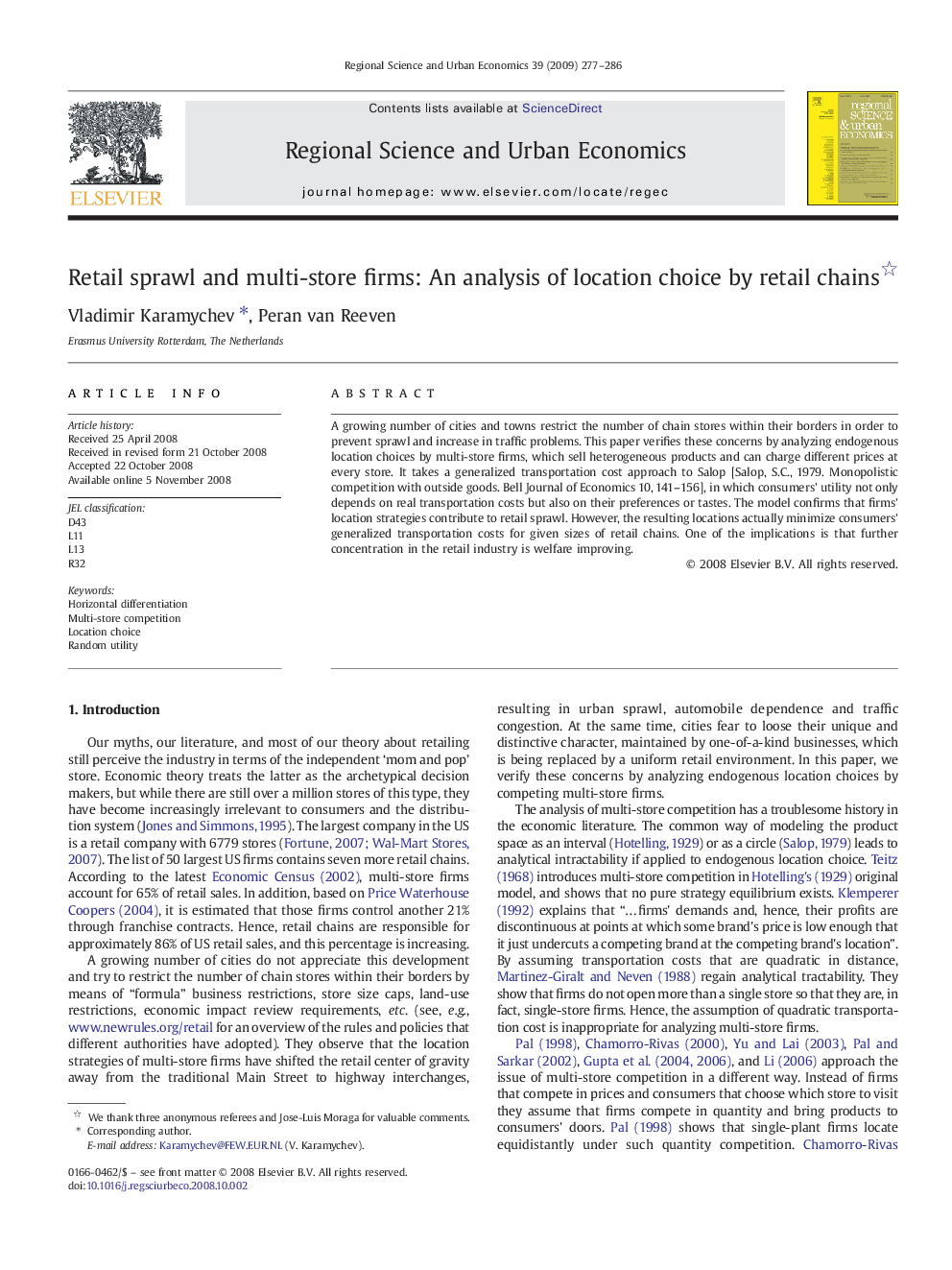| Article ID | Journal | Published Year | Pages | File Type |
|---|---|---|---|---|
| 983892 | Regional Science and Urban Economics | 2009 | 10 Pages |
Abstract
A growing number of cities and towns restrict the number of chain stores within their borders in order to prevent sprawl and increase in traffic problems. This paper verifies these concerns by analyzing endogenous location choices by multi-store firms, which sell heterogeneous products and can charge different prices at every store. It takes a generalized transportation cost approach to Salop [Salop, S.C., 1979. Monopolistic competition with outside goods. Bell Journal of Economics 10, 141-156], in which consumers' utility not only depends on real transportation costs but also on their preferences or tastes. The model confirms that firms' location strategies contribute to retail sprawl. However, the resulting locations actually minimize consumers' generalized transportation costs for given sizes of retail chains. One of the implications is that further concentration in the retail industry is welfare improving.
Related Topics
Social Sciences and Humanities
Economics, Econometrics and Finance
Economics and Econometrics
Authors
Vladimir Karamychev, Peran van Reeven,
